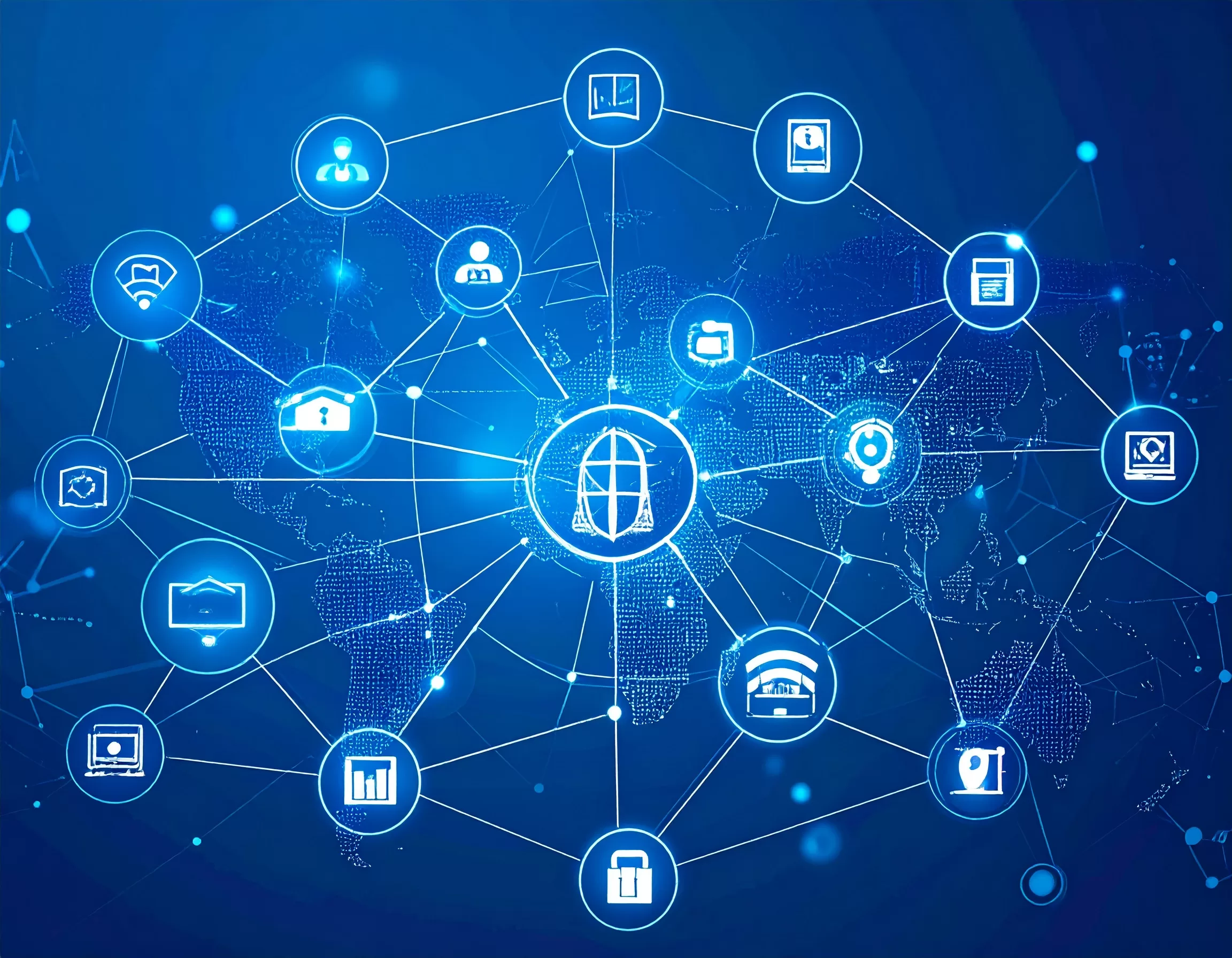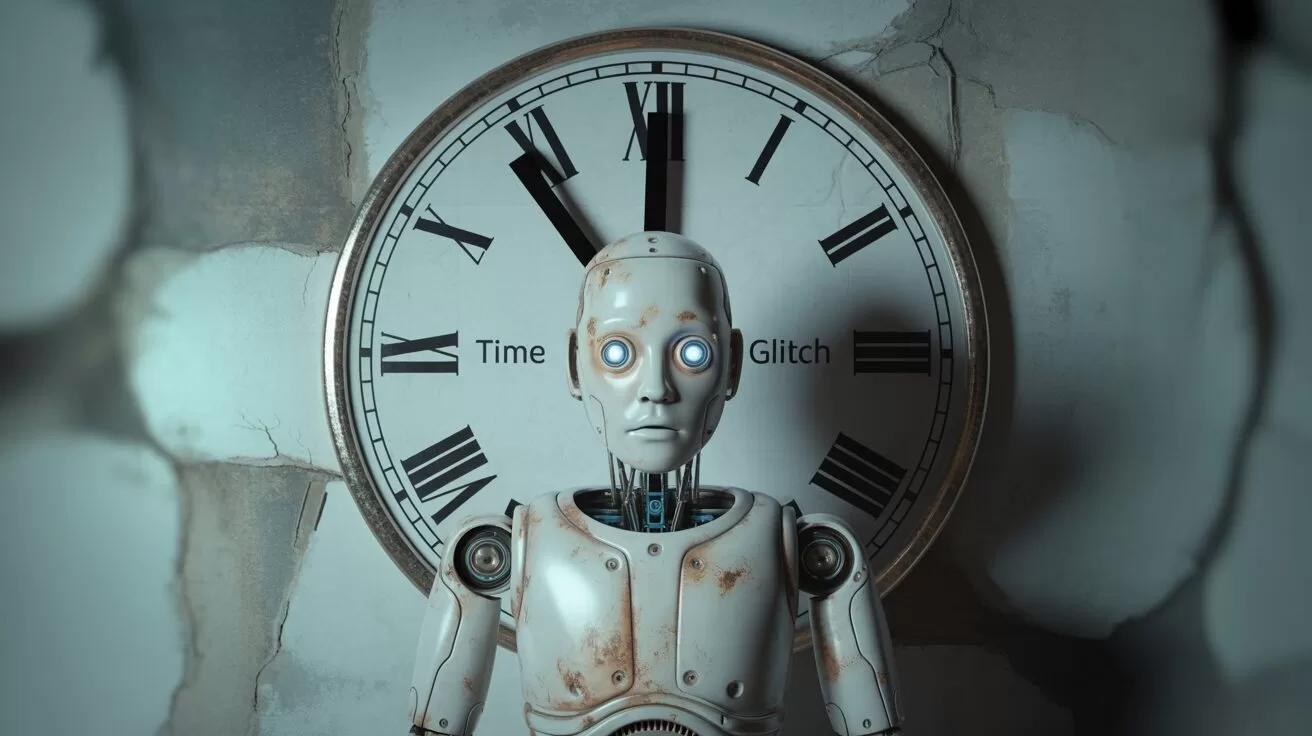News
Tencent Takes on DeepSeek: Meet the Lightning-Fast Hunyuan Turbo S
Tencent introduces Hunyuan Turbo S, an AI model responding faster than DeepSeek’s R1, creating competition among China’s top tech companies.
Published
3 months agoon
By
AIinAsia
TL;DR – What You Need to Know in 30 Seconds about this Tencent AI model
- Tencent launched the Hunyuan Turbo S AI model with response times under a second.
- Turbo S directly competes with and surpasses DeepSeek’s acclaimed R1 model in speed.
- The model significantly lowers usage costs, responding to DeepSeek’s aggressive pricing.
- Increased AI competition in China is accelerating innovation and affordability.
Introducing the Tencent AI Model Hunyuan Turbo S
When it comes to AI models, speed and affordability are king—and Tencent just raised the stakes. The Chinese tech giant recently unveiled its new Hunyuan Turbo S AI model, boldly claiming it can answer your queries faster than you can blink. Well, maybe not literally, but at under one second per response, it’s leaving notable competitors, including DeepSeek’s hugely popular R1 model, in the digital dust.
Turbocharged AI: How Fast Are We Talking?
Tencent’s latest model doesn’t just aim for speed—it practically redefines it. According to Tencent, the Turbo S responds significantly faster than other AI heavyweights, especially when compared to DeepSeek’s R1, which Tencent cheekily described as a “slow-thinking model” needing a bit of a pause before answering. This claim isn’t just hype; tests in complex fields like mathematics, general knowledge, and reasoning have shown Turbo S holding its own, matching—and sometimes exceeding—DeepSeek’s acclaimed V3 model, a chatbot that has famously dethroned OpenAI’s ChatGPT in app store popularity.
Why the Sudden Need for Speed?
DeepSeek’s rapid global adoption, notably in Silicon Valley, has clearly rattled its Chinese peers. With DeepSeek-R1 triggering stock market shifts and gaining widespread international acclaim, giants like Tencent and Alibaba have been pushed into a competitive sprint, accelerating their AI development cycles and aggressively cutting costs to remain competitive.
The Tencent AI model response is strategic, focusing on more than just raw speed. A major highlight of Turbo S is its cost efficiency. By significantly reducing usage costs compared to earlier models, Tencent is directly challenging DeepSeek’s open-source, low-cost strategy. Clearly, competitive pressures have forced Chinese AI developers to rethink pricing strategies, which can only mean good news for users.
Tencent Isn’t Alone: Alibaba Joins the AI Arms Race
The competition doesn’t stop with Tencent. Just weeks ago, Alibaba jumped headfirst into the fray by launching the Qwen 2.5-Max AI model, boldly claiming performance superior to DeepSeek’s V3. Alibaba’s determination to dominate the AI landscape was underscored by a massive $53 billion commitment to AI and cloud computing infrastructure over the next three years.
DeepSeek’s Growing Influence Across Industries
The AI frenzy sparked by DeepSeek isn’t confined to just Tencent and Alibaba. Major telecom providers—China Mobile, China Unicom, and China Telecom—have integrated DeepSeek models into their cloud services. Leading smartphone brands, including Huawei, Vivo, and Oppo, have also jumped aboard, embedding these powerful AI tools into their offerings.
Even Tencent’s own messaging app, Weixin (WeChat’s domestic counterpart), and Baidu’s search engine and Ernie Bot have begun integrating DeepSeek technologies, reflecting an industry-wide recognition of DeepSeek’s impressive capabilities.
Education Sector: Embracing the AI Revolution
Chinese universities are enthusiastically integrating DeepSeek into their curriculum. Shenzhen University launched an AI course centered around DeepSeek, tackling essential topics from technological fundamentals to ethical implications. Zhejiang University and Shanghai’s Jiao Tong University have also adopted DeepSeek in classrooms, aiming to enhance teaching, research, and administrative functions.
What This Means for You
This rapid-fire innovation spells exciting times for users and businesses alike. With AI models becoming both more powerful and affordable, expect deeper integration across digital and physical experiences, enhanced efficiency in operations, and even new business opportunities.
Tencent’s Hunyuan Turbo S isn’t just another tech headline—it’s a sign of an intensifying AI competition reshaping how we interact with technology.
What are your thoughts on Tencent’s bold moves? Are we seeing a real game-changer or just another entry in an increasingly crowded space? Join the conversation! Or subscribe to our free newsletter by tapping here.
You may also like:
- DeepSeek Dilemma: AI Ambitions Collide with South Korean Privacy Safeguards
- Westlife Sings in Mandarin with AI
- Or try it now by tapping here (Chinese language)
Author
Discover more from AIinASIA
Subscribe to get the latest posts sent to your email.
You may like
-


Adrian’s Arena: Will AI Get You Fired? 9 Mistakes That Could Cost You Everything
-


Microsoft & Perplexity Give DeepSeek Their Stamp of Approval
-


Adrian’s Arena: AI in 2024 – Key Lessons and Bold Predictions for 2025
-


How AI is Transforming the Traditional Jobs We Don’t Think About
-


Adrian’s Arena: East Meets West – Contrasting AI Partnership Strategies for OpenAI
-


OpenAI Expands to Singapore: A New Hub for AI Innovation in Asia
News
GPT-5 Is Less About Revolution, More About Refinement
This article explores OpenAI’s development of GPT-5, focusing on improving user experience by unifying AI tools and reducing the need for manual model switching. It includes insights from VP of Research Jerry Tworek on token growth, benchmarks, and the evolving role of humans in the AI era.
Published
6 days agoon
May 22, 2025By
AIinAsia
OpenAI’s next model isn’t chasing headlines—it’s building a smoother, smarter user experience with fewer interruptions the launch of GPT-5 unified tools.
TL;DR — What You Need To Know
- GPT-5 aims to unify OpenAI’s tools, reducing the need for switching between models
- The Operator screen agent is due for an upgrade, with a push towards becoming a desktop-level assistant
- Token usage continues to rise, suggesting growing AI utility and infrastructure demand
- Benchmarks are losing their relevance, with real-world use cases taking centre stage
- OpenAI believes AI won’t replace humans but may reshape human labour roles
A more cohesive AI experience, not a leap forward
While GPT-4 dazzled with its capabilities, GPT-5 appears to be a quieter force, according to OpenAI’s VP of Research, Jerry Tworek. Speaking during a recent Reddit Q&A with the Codex team, Tworek described the new model as a unifier—not a disruptor.
“We just want to make everything our models can currently do better and with less model switching,” Tworek said. That means streamlining the experience so users aren’t constantly toggling between tools like Codex, Operator, Deep Research and memory functions.
For OpenAI, the future lies in integration over invention. Instead of introducing radically new features, GPT-5 focuses on making the existing stack work together more fluidly. This approach marks a clear departure from the hype-heavy rollouts often associated with new model versions.
Operator: from browser control to desktop companion
One of the most interesting pieces in this puzzle is Operator, OpenAI’s still-experimental screen agent. Currently capable of basic browser navigation, it’s more novelty than necessity. But that may soon change.
An update to Operator is expected “soon,” with Tworek hinting it could evolve into a “very useful tool.” The goal? A kind of AI assistant that handles your screen like a power user, automating online tasks without constantly needing user prompts.
The update is part of a broader push to make AI tools feel like one system, rather than a toolkit you have to learn to assemble. That shift could make screen agents like Operator truly indispensable—especially in Asia, where mobile-first behaviour and app fragmentation often define the user journey.
Integration efforts hit reality checks
Originally, OpenAI promised that GPT-5 would merge the GPT and “o” model series into a single omnipotent system. But as with many grand plans in AI, the reality was less elegant.
In April, CEO Sam Altman admitted the challenge: full integration proved more complex than expected. Instead, the company released o3 and o4-mini as standalone models, tailored for reasoning.
Tworek confirmed that the vision of reduced model switching is still alive—but not at the cost of model performance. Users will still see multiple models under the hood; they just might not have to choose between them manually.
Tokens and the long road ahead
If you think the token boom is a temporary blip, think again. Tworek addressed a user scenario where AI assistants might one day process 100 tokens per second continuously, reading sensors, analysing messages, and more.
That, he says, is entirely plausible. “Even if models stopped improving,” Tworek noted, “they could still deliver a lot of value just by scaling up.”
This perspective reflects a strategic bet on infrastructure. OpenAI isn’t just building smarter models; it’s betting on broader usage. Token usage becomes a proxy for economic value—and infrastructure expansion the necessary backbone.
Goodbye benchmarks, hello real work
When asked to compare GPT with rivals like Claude or Gemini, Tworek took a deliberately contrarian stance. Benchmarks, he suggested, are increasingly irrelevant.
“They don’t reflect how people actually use these systems,” he explained, noting that many scores are skewed by targeted fine-tuning.
Instead, OpenAI is doubling down on real-world tasks as the truest test of model performance. The company’s ambition? To eliminate model choice altogether. “Our goal is to resolve this decision paralysis by making the best one.”
The human at the helm
Despite AI’s growing power, Tworek offered a thoughtful reminder: some jobs will always need humans. While roles will evolve, the need for oversight won’t go away.
“In my view, there will always be work only for humans to do,” he said. The “last job,” he suggested, might be supervising the machines themselves—a vision less dystopian, more quietly optimistic.
For Asia’s fast-modernising economies, that might be a signal to double down on education, critical thinking, and human-centred design. The jobs of tomorrow may be less about doing, and more about directing.
You May Also Like:
- ChatGPT-5 Is Coming in 2024: Sam Altman
- Revolutionise Your Designs with Canva’s AI-Powered Magic Tools
- Revolutionising Critical Infrastructure: How AI is Becoming More Reliable and Transparent
- Or tap here to try the free version of ChatGPT.
Author
Discover more from AIinASIA
Subscribe to get the latest posts sent to your email.
Business
Apple’s China AI pivot puts Washington on edge
Apple’s partnership with Alibaba to deliver AI services in China has sparked concern among U.S. lawmakers and security experts, highlighting growing tensions in global technology markets.
Published
1 week agoon
May 21, 2025By
AIinAsia
As Apple courts Alibaba for its iPhone AI partnership in China, U.S. lawmakers see more than just a tech deal taking shape.
TL;DR — What You Need To Know
- Apple has reportedly selected Alibaba’s Qwen AI model to power its iPhone features in China
- U.S. lawmakers and security officials are alarmed over data access and strategic implications
- The deal has not been officially confirmed by Apple, but Alibaba’s chairman has acknowledged it
- China remains a critical market for Apple amid declining iPhone sales
- The partnership highlights the growing difficulty of operating across rival tech spheres
Apple Intelligence meets the Great Firewall
Apple’s strategic pivot to partner with Chinese tech giant Alibaba for delivering AI services in China has triggered intense scrutiny in Washington. The collaboration, necessitated by China’s blocking of OpenAI services, raises profound questions about data security, technological sovereignty, and the intensifying tech rivalry between the United States and China. As Apple navigates declining iPhone sales in the crucial Chinese market, this partnership underscores the increasing difficulty for multinational tech companies to operate seamlessly across divergent technological and regulatory environments.
Apple Intelligence Meets Chinese Regulations
When Apple unveiled its ambitious “Apple Intelligence” system in June, it marked the company’s most significant push into AI-enhanced services. For Western markets, Apple seamlessly integrated OpenAI’s ChatGPT as a cornerstone partner for English-language capabilities. However, this implementation strategy hit an immediate roadblock in China, where OpenAI’s services remain effectively banned under the country’s stringent digital regulations.
Faced with this market-specific challenge, Apple initiated discussions with several Chinese AI leaders to identify a compliant local partner capable of delivering comparable functionality to Chinese consumers. The shortlist reportedly included major players in China’s burgeoning AI sector:
- Baidu, known for its Ernie Bot AI system
- DeepSeek, an emerging player in foundation models
- Tencent, the social media and gaming powerhouse
- Alibaba, whose open-source Qwen model has gained significant attention
While Apple has maintained its characteristic silence regarding partnership details, recent developments strongly suggest that Alibaba’s Qwen model has emerged as the chosen solution. The arrangement was seemingly confirmed when Alibaba’s chairman made an unplanned reference to the collaboration during a public appearance.
“Apple’s decision to implement a separate AI system for the Chinese market reflects the growing reality of technological bifurcation between East and West. What we’re witnessing is the practical manifestation of competing digital sovereignty models.”
Washington’s Mounting Concerns
The revelation of Apple’s China-specific AI strategy has elicited swift and pronounced reactions from U.S. policymakers. Members of the House Select Committee on China have raised alarms about the potential implications, with some reports indicating that White House officials have directly engaged with Apple executives on the matter.
Representative Raja Krishnamoorthi of the House Intelligence Committee didn’t mince words, describing the development as “extremely disturbing.” His reaction encapsulates broader concerns about American technological advantages potentially benefiting Chinese competitors through such partnerships.
Greg Allen, Director of the Wadhwani A.I. Centre at CSIS, framed the situation in competitive terms:
“The United States is in an AI race with China, and we just don’t want American companies helping Chinese companies run faster.”
The concerns expressed by Washington officials and security experts include:
- Data Sovereignty Issues: Questions about where and how user data from AI interactions would be stored, processed, and potentially accessed
- Model Training Advantages: Concerns that the vast user interactions from Apple devices could help improve Alibaba’s foundational AI models
- National Security Implications: Worries about whether sensitive information could inadvertently flow through Chinese servers
- Regulatory Compliance: Questions about how Apple will navigate China’s content restrictions and censorship requirements
In response to these growing concerns, U.S. agencies are reportedly discussing whether to place Alibaba and other Chinese AI companies on a restricted entity list. Such a designation would formally limit collaboration between American and Chinese AI firms, potentially derailing arrangements like Apple’s reported partnership.
Commercial Necessities vs. Strategic Considerations
Apple’s motivation for pursuing a China-specific AI solution is straightforward from a business perspective. China remains one of the company’s largest and most important markets, despite recent challenges. Earlier this spring, iPhone sales in China declined by 24% year over year, highlighting the company’s vulnerability in this critical market.
Without a viable AI strategy for Chinese users, Apple risks further erosion of its market position at precisely the moment when AI features are becoming central to consumer technology choices. Chinese competitors like Huawei have already launched their own AI-enhanced smartphones, increasing pressure on Apple to respond.
“Apple faces an almost impossible balancing act. They can’t afford to offer Chinese consumers a second-class experience by omitting AI features, but implementing them through a Chinese partner creates significant political exposure in the U.S.
The situation is further complicated by China’s own regulatory environment, which requires foreign technology companies to comply with data localisation rules and content restrictions. These requirements effectively necessitate some form of local partnership for AI services.
A Blueprint for the Decoupled Future?
Whether Apple’s partnership with Alibaba proceeds as reported or undergoes modifications in response to political pressure, the episode provides a revealing glimpse into the fragmenting global technology landscape.
As digital ecosystems increasingly align with geopolitical boundaries, multinational technology firms face increasingly complex strategic decisions:
- Regionalised Technology Stacks: Companies may need to develop and maintain separate technological implementations for different markets
- Partnership Dilemmas: Collaborations beneficial in one market may create political liabilities in others
- Regulatory Navigation: Operating across divergent regulatory environments requires sophisticated compliance strategies
- Resource Allocation: Developing market-specific solutions increases costs and complexity
What we’re seeing with Apple and Alibaba may become the norm rather than the exception. The era of frictionless global technology markets is giving way to one where regional boundaries increasingly define technological ecosystems.
Looking Forward
For now, Apple Intelligence has no confirmed launch date for the Chinese market. However, with new iPhone models traditionally released in autumn, Apple faces mounting time pressure to finalise its AI strategy.
The company’s eventual approach could signal broader trends in how global technology firms navigate an increasingly bifurcated digital landscape. Will companies maintain unified global platforms with minimal adaptations, or will we see the emergence of fundamentally different technological experiences across major markets?
As this situation evolves, it highlights a critical reality for the technology sector: in an era of intensifying great power competition, even seemingly routine business decisions can quickly acquire strategic significance.
You May Also Like:
- Alibaba’s AI Ambitions: Fueling Cloud Growth and Expanding in Asia
- Apple Unleashes AI Revolution with Apple Intelligence: A Game Changer in Asia’s Tech Landscape
- Apple and Meta Explore AI Partnership
Author
Discover more from AIinASIA
Subscribe to get the latest posts sent to your email.
News
AI still can’t tell the time, and it’s a bigger problem than it sounds
This article explores new findings from ICLR 2025 revealing the limitations of leading AI models in basic timekeeping tasks. Despite excelling at language and pattern recognition, AIs falter when asked to interpret analogue clocks or calendar dates, raising crucial questions for real-world deployment in Asia.
Published
1 week agoon
May 19, 2025By
AIinAsia
Despite its growing prowess in language, images and coding, AI timekeeping ability is stumped by the humble clock and calendar.
TL;DR — What You Need To Know
- AI models struggle with tasks most humans master as children: reading analogue clocks and determining calendar dates.
- New research tested leading AI models and found they failed over 60% of the time.
- The findings raise questions about AI’s readiness for real-world, time-sensitive applications.
AI can pass law exams but flubs a clock face
It’s hard not to marvel at the sophistication of large language models. They write passable essays, chat fluently in multiple languages, and generate everything from legal advice to song lyrics. But put one in front of a basic clock or ask it what day a date falls on, and it might as well be guessing.
At the recent International Conference on Learning Representations (ICLR), researchers unveiled a startling finding: even top-tier AI models such as GPT-4o, Claude-3.5 Sonnet, Gemini 2.0 and LLaMA 3.2 Vision struggle mightily with time-related tasks. In a study led by Rohit Saxena from the University of Edinburgh, these systems were tested on their ability to interpret images of clocks and respond to calendar queries. They failed more than half the time.
“Most people can tell the time and use calendars from an early age,” Saxena explained. “Our findings highlight a significant gap in the ability of AI to carry out what are quite basic skills for people.”
Reading the time: a surprisingly complex puzzle
To a human, clock reading feels instinctive. To a machine, it’s a visual nightmare. Consider the elements involved:
- Overlapping hands that require angle estimation
- Diverse designs using Roman numerals or decorative dials
- Variability in colour, style, and size
While older AI systems relied on labelled datasets, clock reading demands spatial reasoning. As Saxena noted:
AI recognising that ‘this is a clock’ is easier than actually reading it.
In testing, even the most advanced models correctly read the time from a clock image just 38.7% of the time. That’s worse than random chance on many tasks.
Calendar chaos: dates and days don’t add up
When asked, “What day is the 153rd day of the year?”, humans reach for logic or a calendar. AI, by contrast, attempts to spot a pattern. This doesn’t always go well.
The study showed that calendar queries stumped the models even more than clocks, with just 26.3% accuracy. And it’s not just a lack of memory — it’s a fundamentally different approach. LLMs don’t execute algorithms like traditional computers; they predict outputs based on training patterns.
So while an AI might ace the question “Is 2028 a leap year?”, it could completely fail at mapping that fact onto a real-world date. Training data often omits edge cases like leap years or obscure date calculations.
What it means for Asia’s AI future
From India’s booming tech sector to Japan’s robotics leaders, AI applications are proliferating across Asia. Scheduling tools, autonomous systems, and assistive tech rely on accurate timekeeping — a weakness this research throws into sharp relief.
For companies deploying AI into customer service, logistics, or smart city infrastructure, such flaws aren’t trivial. If an AI can’t reliably say what time it is, it’s hardly ready to manage hospital shift schedules or transport timetables.
These findings argue for hybrid models and tighter oversight. AI isn’t useless here — but it may need more handholding than previously thought.
When logic and vision collide
This study underscores a deeper truth: AI isn’t just a faster brain. It’s something else entirely. What humans do intuitively often mixes perception with logic. AI, however, processes one layer at a time.
Tasks like reading clocks or calculating dates demand a blend of visual interpretation, spatial understanding, and logical sequence — all areas where LLMs still struggle when combined.
“AI is powerful, but when tasks mix perception with precise reasoning, we still need rigorous testing, fallback logic, and in many cases, a human in the loop,” Saxena concluded.
You May Also Like:
Author
Discover more from AIinASIA
Subscribe to get the latest posts sent to your email.

Build Your Own Custom GPT in Under 30 Minutes – Step-by-Step Beginner’s Guide

Adrian’s Arena: Stop Collecting AI Tools and Start Building a Stack

GPT-5 Is Less About Revolution, More About Refinement
Trending
-

 Life2 weeks ago
Life2 weeks ago7 Mind-Blowing New ChatGPT Use Cases in 2025
-

 Business2 weeks ago
Business2 weeks agoAI Just Killed 8 Jobs… But Created 15 New Ones Paying £100k+
-

 Learning1 week ago
Learning1 week agoHow to Use the “Create an Action” Feature in Custom GPTs
-

 Tools3 weeks ago
Tools3 weeks agoEdit AI Images on the Go with Gemini’s New Update
-

 Learning2 days ago
Learning2 days agoBuild Your Own Custom GPT in Under 30 Minutes – Step-by-Step Beginner’s Guide
-

 Learning1 week ago
Learning1 week agoHow to Upload Knowledge into Your Custom GPT
-

 Business5 days ago
Business5 days agoAdrian’s Arena: Stop Collecting AI Tools and Start Building a Stack
-

 Life2 weeks ago
Life2 weeks agoAdrian’s Arena: Will AI Get You Fired? 9 Mistakes That Could Cost You Everything






























